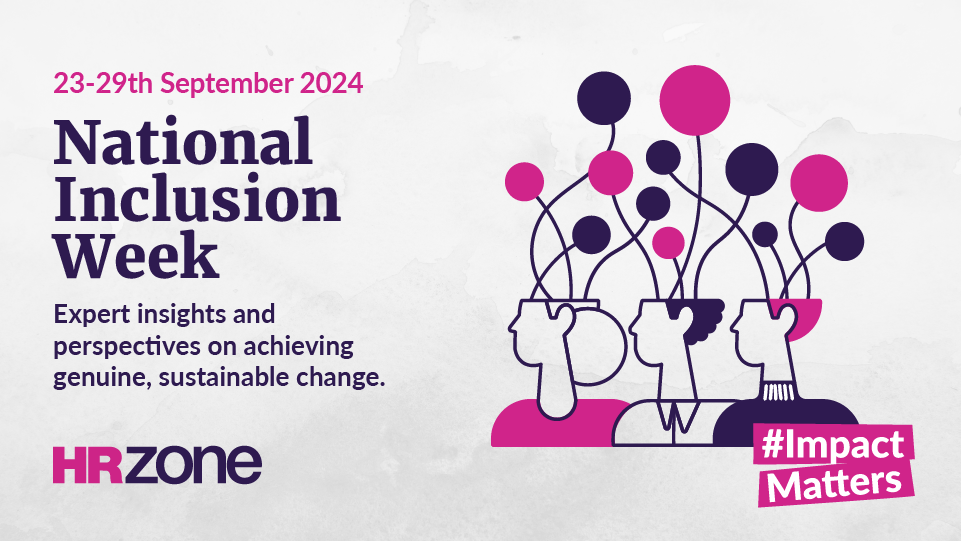This article is part of an HRZone series recognising National Inclusion Week 2024: #ImpactMatters.
When facilitating diversity, equity and inclusion (DEI) conversations with leaders, it isn’t uncommon I get a series of blank and sometimes confused faces.
This typically happens when I have described some common experiences and acts of exclusion that people in the minority group often face.
For example, that people with Afro hair often experience unwanted hair touching, or that a woman’s idea in a meeting might get ignored, but is then listened to when repeated by a man, or that the seat next to a Black man on a busy commuter train is left empty whilst people choose to stand. I could go on.
The point is that some leaders have a reluctance to accept what is being described without evidence. I call these proof-seeking leaders.
Some leaders have a reluctance to accept what is being described without evidence
What is a proof-seeking leader?
Proof-seeking leaders are sense-making based on their established truths and what they observe as reality.
When the information doesn’t stack up, they are more likely to disregard it than question their existing beliefs.
They are the type of leader who prefers to make a decision once they have all the data and avoid uncertainty unless absolutely necessary.
The challenge that they often face when it comes to DEI, though, is that the evidence presented either doesn’t make sense or lacks evidence to substantiate it.
For example, in my book, Beyond Discomfort: Why inclusive leadership is so hard (and what you can do about it), I describe a conversation I had with a White female senior leader who explained that she had a Black member of her team who was underperforming.
She addressed the team member, offering feedback and giving examples of where the issues were. However, she was shocked and unsettled to then be accused of being racist.
The importance of history
There is a huge amount of complexity surrounding this scenario. The reason is that we can’t take what is happening in this specific context solely into consideration – we need to look at the system.
What I mean by that is the system of today’s society, which can only be completely understood if we investigate and understand our world history.
We can’t (and shouldn’t) ignore that centuries of abuse, oppression and extreme violence has made skin colour pertinent to how non-White people are treated. This is deeply etched into society and pervades all aspects of contemporary life.
Sadly today, there are many, many examples of racist hate crimes, evidence of police racial profiling and significant differences in health outcomes between White and minority ethnic people (to name just a few societal issues).
Imagine then, walking through the world being acutely aware that there is a part of you that strongly determines how people respond to you, and never being sure when or how overtly it might show up.
Not only that, it might be so subtle, such as your line manager being less patient in supporting your development compared to White colleagues, that it can only be felt rather than proven.
Proof-seeking leaders who prefer data, facts and tangible evidence tend to have a fear of the unknown
How will we ever know?
This White leader, who had absolute confidence in her unbiased behaviour, wondered whether her Black team member was ‘playing the race card’. What does this mean?
In essence, it suggests that minority ethnic individuals are using racism to their advantage in order to get sympathy or special treatment, delegitimising the experiences of racism and denying it as a possible reality.
Counter to that, does that mean that it is never possible for a minority ethnic person to under-perform and be held accountable?
As a proof-seeking leader, you might be asking the question, ‘But how will we ever know?’. Is it possible that this White female leader was performance managing her Black team member in the same way she would have a White team member? Yes.
Is it possible that she was unconsciously acting on stereotypes and biases, which meant she questioned her Black team member’s competence quicker than if they had been White? Yes.
A way forward
Unfortunately, I can’t magically offer a simple solution to this. As with most things related to diversity, equity and inclusion, it’s hugely complex and intangible.
In an ideal world, the White female leader:
- Would question her confidence that she isn’t acting on any biases and be willing to explore her beliefs and internal narratives about her Black team member and Black people in general
- Would show courage and open up an uncomfortable conversation with her Black team member, asking what it is that she has said or done that makes her colleague feel that she is being performance managed because of her race. It’s important that this comes from a place of genuine curiosity rather than a defensive ‘prove-it’ mindset
- Would create an environment where her Black team member feels psychologically safe to be able to have this new type of open conversation and confident that whatever she shares wouldn’t be to her detriment
You can see, then, why these conversations are rarely had.
A simple way to start this work is to invite new discussions with diverse colleagues
Pushing past a fear of the unknown
Proof-seeking leaders who prefer data, facts and tangible evidence tend to have a fear of the unknown. Being an inclusive leader, in many ways, sits at a juxtaposition to traditional leadership qualities – being strong, clear-minded and in control.
Strength isn’t about clear decisions and always knowing the answers, but about being open-minded and curious of other people’s experiences, ideas and thoughts.
There is discomfort in entertaining the possibility that through their entire leadership career, the truth may not have been quite what they thought.
It’s important for proof-seeking leaders to recognise that this doesn’t mean they are a bad leader – the world isn’t binary in this way (right and wrong, good and bad, competent and incompetent).
The deep, inner self-work is to understand that there is a grey area in between, which allows us to be open to new possibilities and new truths – multiple truths in fact. A simple way to start this work is to invite new discussions with diverse colleagues, and be curious about their personal experiences, noticing how this might be different to our own.
Nadia Nagamootoo’s debut book, Beyond Discomfort: Why inclusive leadership is so hard (and what you can do about it) is available to purchase now.







